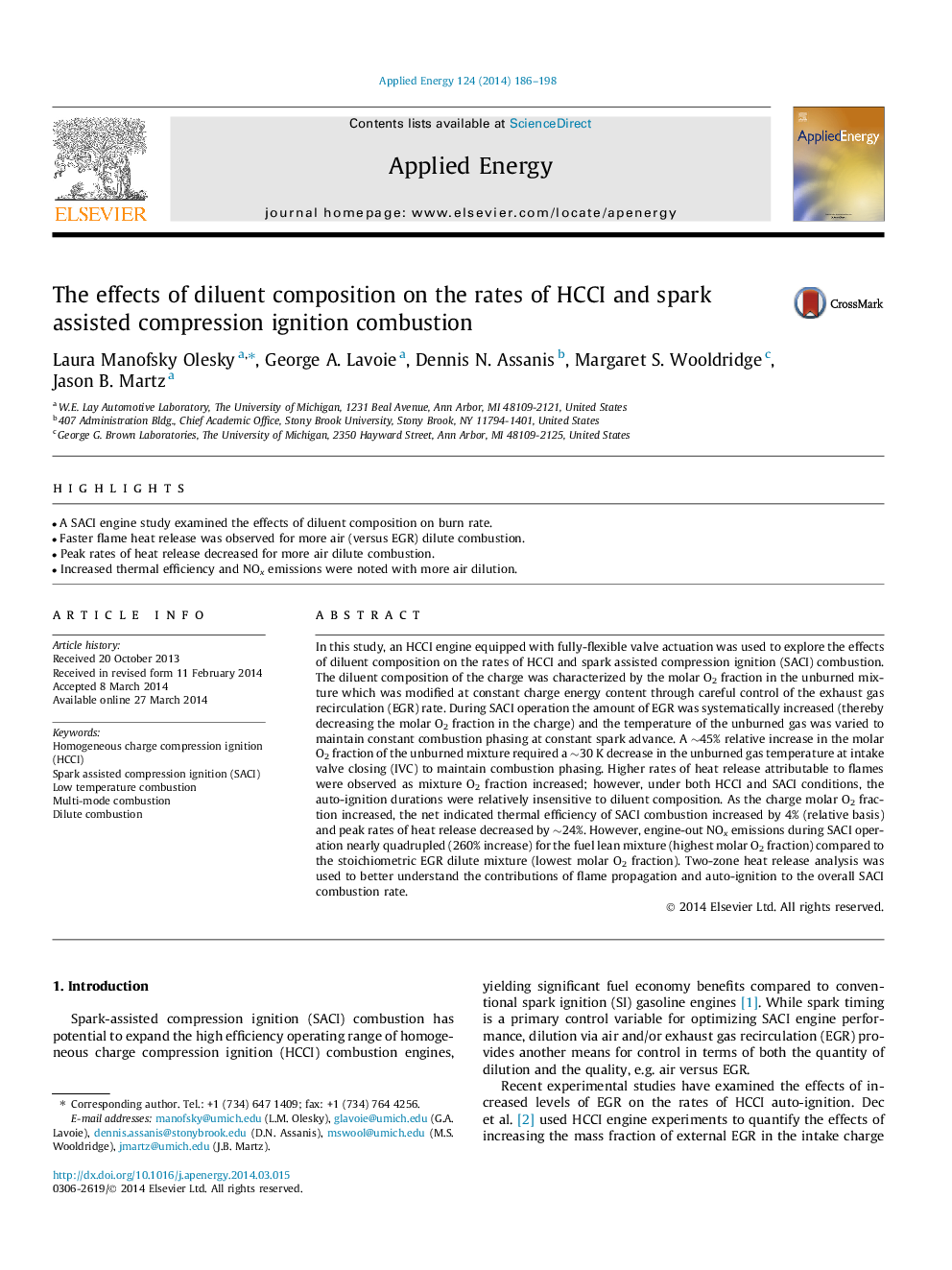| کد مقاله | کد نشریه | سال انتشار | مقاله انگلیسی | نسخه تمام متن |
|---|---|---|---|---|
| 242824 | 501903 | 2014 | 13 صفحه PDF | دانلود رایگان |

• A SACI engine study examined the effects of diluent composition on burn rate.
• Faster flame heat release was observed for more air (versus EGR) dilute combustion.
• Peak rates of heat release decreased for more air dilute combustion.
• Increased thermal efficiency and NOx emissions were noted with more air dilution.
In this study, an HCCI engine equipped with fully-flexible valve actuation was used to explore the effects of diluent composition on the rates of HCCI and spark assisted compression ignition (SACI) combustion. The diluent composition of the charge was characterized by the molar O2 fraction in the unburned mixture which was modified at constant charge energy content through careful control of the exhaust gas recirculation (EGR) rate. During SACI operation the amount of EGR was systematically increased (thereby decreasing the molar O2 fraction in the charge) and the temperature of the unburned gas was varied to maintain constant combustion phasing at constant spark advance. A ∼45% relative increase in the molar O2 fraction of the unburned mixture required a ∼30 K decrease in the unburned gas temperature at intake valve closing (IVC) to maintain combustion phasing. Higher rates of heat release attributable to flames were observed as mixture O2 fraction increased; however, under both HCCI and SACI conditions, the auto-ignition durations were relatively insensitive to diluent composition. As the charge molar O2 fraction increased, the net indicated thermal efficiency of SACI combustion increased by 4% (relative basis) and peak rates of heat release decreased by ∼24%. However, engine-out NOx emissions during SACI operation nearly quadrupled (260% increase) for the fuel lean mixture (highest molar O2 fraction) compared to the stoichiometric EGR dilute mixture (lowest molar O2 fraction). Two-zone heat release analysis was used to better understand the contributions of flame propagation and auto-ignition to the overall SACI combustion rate.
Journal: Applied Energy - Volume 124, 1 July 2014, Pages 186–198